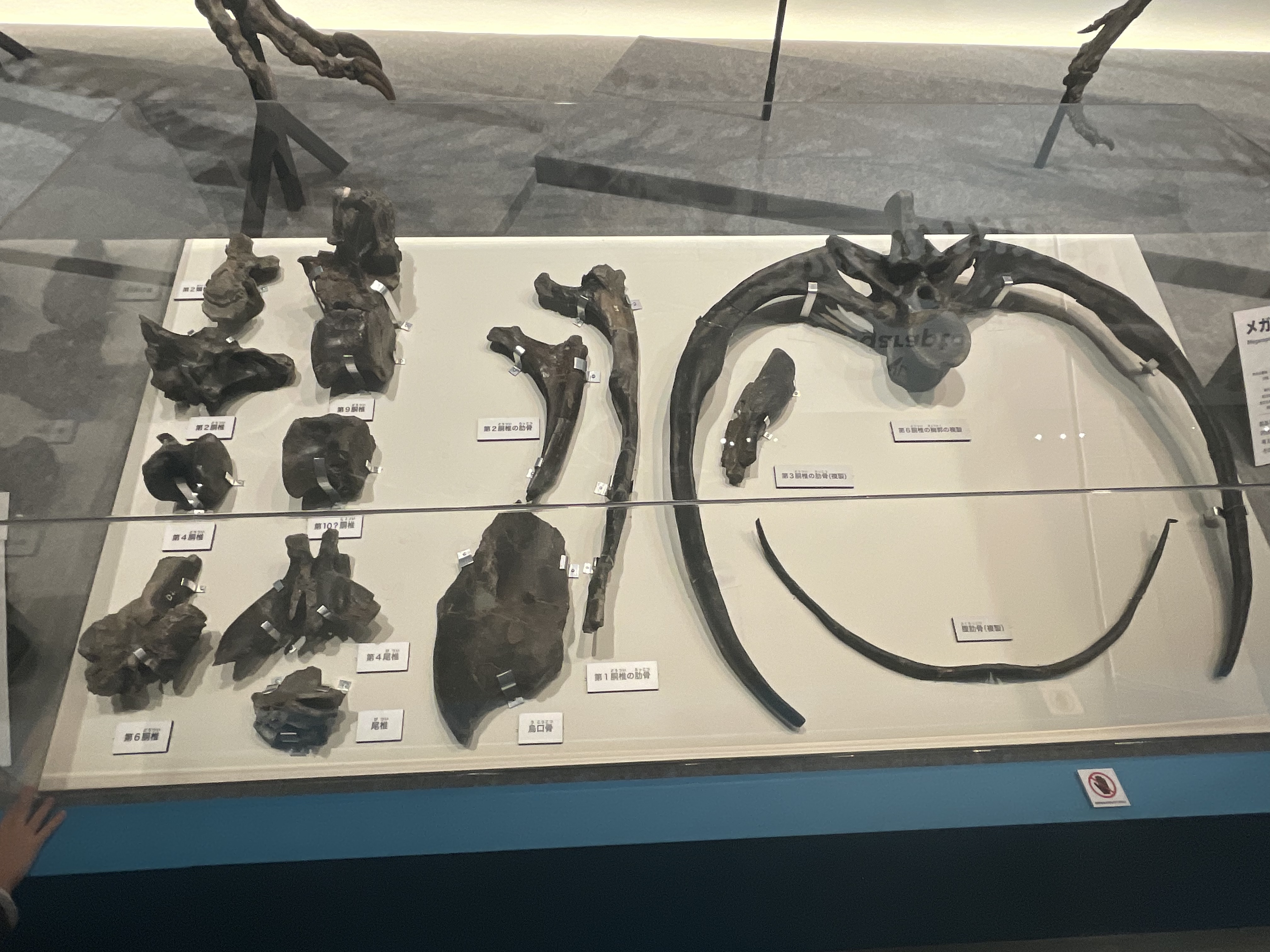|
Chorrillo Formation
The Chorrillo Formation, also named as Chorillo Formation, at Fossilworks.org is a Maastrichtian (Late Cretaceous Epoch, 72.1–66 million years ago) geologic Formation (geology), formation in southern Patagonia, Argentina. The formation is more than thick and underlies the Calafate Formation and rests on top of the La Irene Formation.Marenssi et al., 2003, p.406 Fossils Dinosaur remains are among the fossils that have been recovered from the formation. Fossils recovered from the formation are:Dinosaurs Ornithopods Sauropods Theropods Thyreophorans Anurans Fishes Mammals ...[...More Info...] [...Related Items...] OR: [Wikipedia] [Google] [Baidu] [Amazon] |
|
 |
Perito Moreno Glacier
The Perito Moreno (), Francisco Gormaz or Bismarck Glacier is a glacier located in Los Glaciares National Park in southwest Santa Cruz Province, Argentina, and originated in the Magallanes Region in Chile, being also part of the Bernardo O'Higgins National Park. It is one of the most important tourist attractions in the Argentine Patagonia. The ice formation, in length, is one of 48 glaciers fed by the Southern Patagonian Ice Field located in the Andes system shared with Chile which has a small part of the origins of the glacier. This ice field is the world's third largest reserve of fresh water. The Perito Moreno Glacier, located from El Calafate, was named after the explorer Francisco Moreno, a pioneer who studied the region in the 19th century and played a major role in defending the Argentinian thesis in the 1902 Arbitral award of the Andes between Argentina and Chile. Status Since 2020 the glacier has been retreating on its northern front, possibly due to clim ... [...More Info...] [...Related Items...] OR: [Wikipedia] [Google] [Baidu] [Amazon] |
|
Isasicursor
''Isasicursor'' (meaning "Isasi's runner" after Marcelo Pablo Isasi) is a genus of elasmarian ornithopod from the Chorrillo Formation from Santa Cruz Province in Argentina. The type and only species is ''Isasicursor santacrucensis''. It was a contemporary of the sauropod '' Nullotitan'' which was described in the same paper.Novas, F., Agnolin, F., Rozadilla, S., Aranciaga-Rolando, A., Brissón-Eli, F., Motta, M., Cerroni, M., Ezcurra, M., Martinelli, A., D'Angelo, J., Álvarez-Herrera, G., Gentil, A., Bogan, S., Chimento, N., García-Marsà, J., Lo Coco, G., Miquel, S., Brito, F., Vera, E., Loinaze, V., Fernandez, M., & Salgado, L. (2019)Paleontological discoveries in the Chorrillo Formation (upper Campanian-lower Maastrichtian, Upper Cretaceous), Santa Cruz Province, Patagonia, Argentina Revista del Museo Argentino de Ciencias Naturales, 21(2), 217-293. Discovery and naming In 1980, geologist Francisco E. Nullo noticed the presence of sauropod bones on a hillside of the Estanc ... [...More Info...] [...Related Items...] OR: [Wikipedia] [Google] [Baidu] [Amazon] |
|
 |
Megaraptora
Megaraptora is a clade of carnivorous theropod dinosaurs. Its derived members, the Megaraptoridae are noted for their large hand claws and powerfully-built forelimbs, which are usually reduced in size in other large theropods. Although undoubtedly members of the clade Tetanurae, their relationships to others members of this group have been subject to dispute. Megaraptorans are incompletely known, and no complete megaraptoran skeleton has been found. However, they still possessed a number of unique features. Their forelimbs were large and strongly built, and the ulna bone had a unique shape in members of the family Megaraptoridae, a subset of megaraptorans which excludes '' Fukuiraptor'' and '' Phuwiangvenator''. The first two fingers were elongated, with massive curved claws, while the third finger was small. Megaraptoran skull material is very incomplete, but a juvenile ''Megaraptor'' described in 2014 preserved a portion of the snout, which was long and slender. Leg bones ref ... [...More Info...] [...Related Items...] OR: [Wikipedia] [Google] [Baidu] [Amazon] |
 |
Maip
''Maip'' is a genus of large megaraptorid theropod dinosaur from the Late Cretaceous (Maastrichtian) Chorrillo Formation of Santa Cruz, Argentina. The genus contains a single species, ''M. macrothorax'', known from an incomplete, disarticulated skeleton. ''Maip'' may represent the largest megaraptorid known from South America, and possibly the world. Discovery and naming The ''Maip'' holotype specimen, MPM 21545, was discovered by Alexis Rolando on the La Anita Farm, west of El Calafate, Santa Cruz province, Argentina, in 2019. The specimen was found disarticulated but in association over an area of . The known fossil material consists of the axis, several dorsal and caudal vertebrae, cervical and dorsal ribs, gastralia, a left coracoid, fragmentary scapula, partial right pubis, and partial metatarsal. Some of these bones were described in 2019 by Novas ''et al''. The holotype specimen includes some bones previously unknown in other megaraptorids. Although fragmentary, it r ... [...More Info...] [...Related Items...] OR: [Wikipedia] [Google] [Baidu] [Amazon] |
 |
Bird
Birds are a group of warm-blooded vertebrates constituting the class (biology), class Aves (), characterised by feathers, toothless beaked jaws, the Oviparity, laying of Eggshell, hard-shelled eggs, a high Metabolism, metabolic rate, a four-chambered heart, and a strong yet lightweight Bird skeleton, skeleton. Birds live worldwide and range in size from the bee hummingbird to the common ostrich. There are over 11,000 living species and they are split into 44 Order (biology), orders. More than half are passerine or "perching" birds. Birds have Bird wing, wings whose development varies according to species; the only known groups without wings are the extinct moa and elephant birds. Wings, which are modified forelimbs, gave birds the ability to fly, although further evolution has led to the Flightless bird, loss of flight in some birds, including ratites, penguins, and diverse endemism, endemic island species. The digestive and respiratory systems of birds are also uniquely a ... [...More Info...] [...Related Items...] OR: [Wikipedia] [Google] [Baidu] [Amazon] |
 |
Ornithurae
Ornithurae (meaning "bird tails" in Greek) is a natural group that includes modern birds and their very close relatives such as the ichthyornithines and the hesperornithines. This clade is defined in the ''PhyloCode'' by Juan Benito and colleagues in 2022 as "the smallest clade containing '' Ichthyornis dispar'', '' Hesperornis regalis'', and '' Vultur gryphus''". Classification Ernst Haeckel coined the name in 1866 and included in the group all "true birds" with the "characteristic tail morphology of all extant birds" (translation by Jacques Gauthier). This distinguishes the group from ''Archaeopteryx'', which Haeckel placed in another new group called Sauriurae. Said simply, modern birds have short, fused pygostyle tails, while ''Archaeopteryx'' retained the long tail characteristic of non-avian theropod dinosaurs.Haeckel, Ernst (1866). ''Generelle Morphologie der Organismen''. Berlin: Georg Reimer. Gauthier converted Ornithurae into a clade, giving it a branch-based defi ... [...More Info...] [...Related Items...] OR: [Wikipedia] [Google] [Baidu] [Amazon] |
|
Kookne
''Kookne'' is a prehistoric ornithuran genus from the Late Cretaceous. Known from a coracoid, the remains of the only known species ''Kookne yeutensis'' were found in rocks from the Late Cretaceous (Maastrichtian) Chorrillo Formation of Santa Cruz, Argentina Argentina, officially the Argentine Republic, is a country in the southern half of South America. It covers an area of , making it the List of South American countries by area, second-largest country in South America after Brazil, the fourt ....* References Ornithurae Prehistoric birds of South America {{Paleo-bird-stub ... [...More Info...] [...Related Items...] OR: [Wikipedia] [Google] [Baidu] [Amazon] |
|
 |
Theropoda
Theropoda (; from ancient Greek [wiktionary:θηρίον, , (''therion'') "wild beast"; wiktionary:πούς, , wiktionary:ποδός, (''pous, podos'') "foot"]) is one of the three major groups (Clade, clades) of Dinosaur, dinosaurs, alongside Ornithischia and Sauropodomorpha. Theropods, both extant and extinct, are characterized by hollow bones and three toes and claws on each limb. They are generally classed as a group of saurischian dinosaurs, placing them closer to sauropodomorphs than to ornithischians. They were ancestrally carnivorous, although a number of theropod groups evolved to become herbivores and omnivores. Members of the subgroup Coelurosauria and possibly some other or all theropods were covered in Feather, feathers. In the Jurassic, birds evolved from small specialized coelurosaurian theropods, and are currently represented by about 11,000 living species, making theropods the only group of dinosaurs alive today. Theropods first appeared during the Ca ... [...More Info...] [...Related Items...] OR: [Wikipedia] [Google] [Baidu] [Amazon] |
 |
Nullotitan Skeletal
''Nullotitan'' (meaning "Nullo's giant", in honor of paleontologist Francisco Nullo) is a genus of lithostrotian titanosaur from the Chorrillo Formation from Santa Cruz Province in Argentina. The type and only species is ''Nullotitan glaciaris''. It was a contemporary of the ornithopod ''Isasicursor'' which was described in the same paper. Discovery and naming In 1980, geologist Francisco E. Nullo noticed the presence of sauropod bones on a hillside of the Estancia Alta Vista, south of the Centinela River in the Santa Cruz province of Argentina. He reported these finds to then-prominent paleontologist José Bonaparte. Bonaparte dug up a large cervical vertebra in 1981 and reported it as a cf. ''Antarctosaurus''. The old site was relocated and new excavations were carried out between 13 and 17 January and 14 to 19 March 2019, and a new site was discovered on the Estancia La Anita. A whole new fauna came to light on an area of . including six concentrations of bones that could ... [...More Info...] [...Related Items...] OR: [Wikipedia] [Google] [Baidu] [Amazon] |
 |
Titanosauria
Titanosaurs (or titanosaurians; members of the group Titanosauria) were a diverse group of Sauropoda, sauropod dinosaurs, including genera from all seven continents. The titanosaurs were the last surviving group of long-necked sauropods, with taxa still thriving at the time of the Cretaceous–Paleogene extinction event, extinction event at the end of the Cretaceous. This group includes some of the Largest land animal, largest land animals known to have ever existed, such as ''Patagotitan'', estimated at long with a mass of , and the comparably-sized ''Argentinosaurus'' and ''Puertasaurus'' from the Patagonia, same region. The group's name alludes to the mythological Titan (mythology), Titans of ancient Greek mythology, via the type genus (now considered a ''nomen dubium)'' ''Titanosaurus''. Together with the Brachiosauridae, brachiosaurids and relatives, titanosaurs make up the larger sauropod clade Titanosauriformes. Titanosaurs have long been a poorly-known group, and the rela ... [...More Info...] [...Related Items...] OR: [Wikipedia] [Google] [Baidu] [Amazon] |
|
Colossosauria
Colossosauria is a clade of titanosaur sauropods from the latest Early Cretaceous through the Late Cretaceous of South America. The group was originally named by Bernardo González-Riga ''et al.'' in 2019 and defined as the "most inclusive clade containing '' Mendozasaurus neguyelap'' but not '' Saltasaurus loricatus'' or '' Epachthosaurus sciuttoi''". The clade contains different taxa depending on the phylogenetic analysis used, in the defining paper the only subgroups were Rinconsauria and Lognkosauria, but alternate phylogenies published previously had also included various similar titanosaurs such as ''Aeolosaurus'', ''Bonitasaura'', '' Drusilasaura'', '' Overosaurus'' and '' Quetecsaurus''. The phylogenetic analysis of González-Riga ''et al.'' (2019) placed Colossosauria as sister taxa to ''Epachthosaurus'', '' Pitekunsaurus'' and a larger clade including Saltasauridae. Due to the labile position of ''Epachthosaurus'' in titanosaur phylogeny, Carballido and colleagues propo ... [...More Info...] [...Related Items...] OR: [Wikipedia] [Google] [Baidu] [Amazon] |
|
|
Nullotitan
''Nullotitan'' (meaning "Nullo's giant", in honor of paleontologist Francisco Nullo) is a genus of lithostrotian titanosaur from the Chorrillo Formation from Santa Cruz Province in Argentina. The type and only species is ''Nullotitan glaciaris''. It was a contemporary of the ornithopod '' Isasicursor'' which was described in the same paper. Discovery and naming In 1980, geologist Francisco E. Nullo noticed the presence of sauropod bones on a hillside of the Estancia Alta Vista, south of the Centinela River in the Santa Cruz province of Argentina. He reported these finds to then-prominent paleontologist José Bonaparte. Bonaparte dug up a large cervical vertebra in 1981 and reported it as a cf. ''Antarctosaurus''. The old site was relocated and new excavations were carried out between 13 and 17 January and 14 to 19 March 2019, and a new site was discovered on the Estancia La Anita. A whole new fauna came to light on an area of . including six concentrations of bones that coul ... [...More Info...] [...Related Items...] OR: [Wikipedia] [Google] [Baidu] [Amazon] |